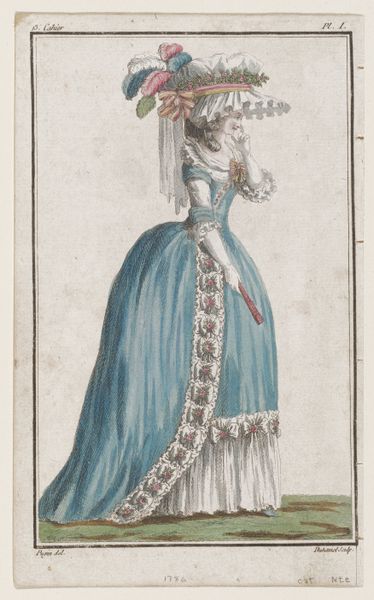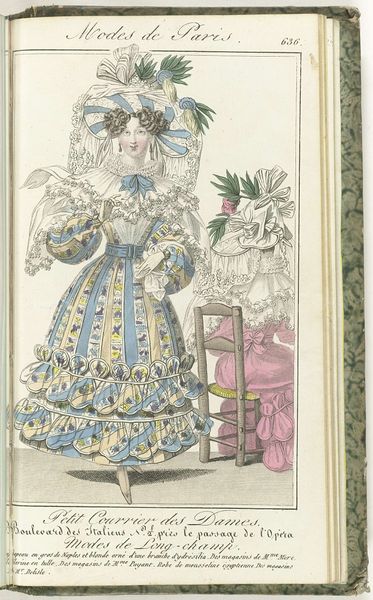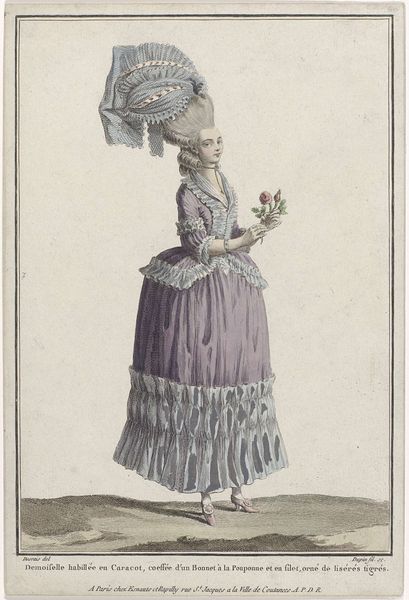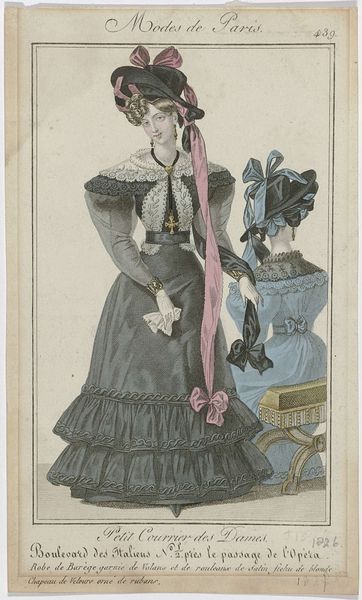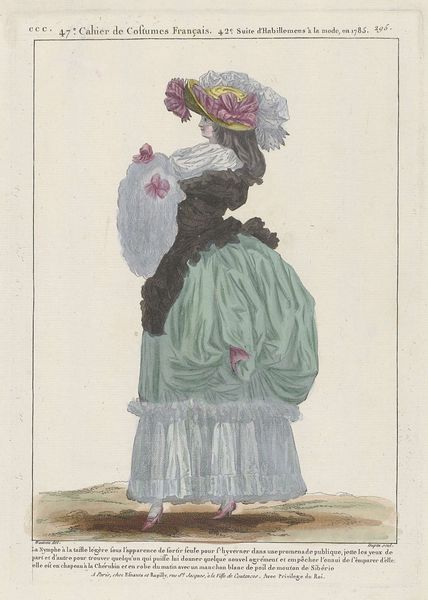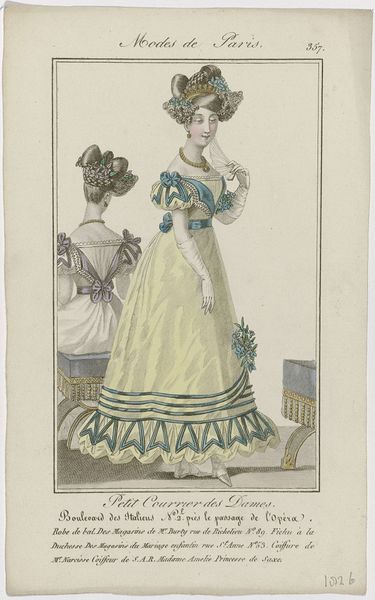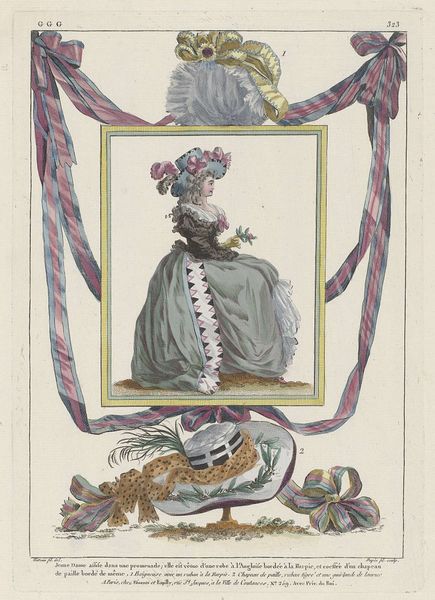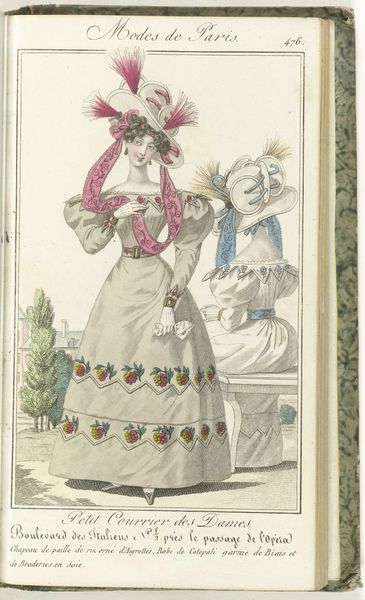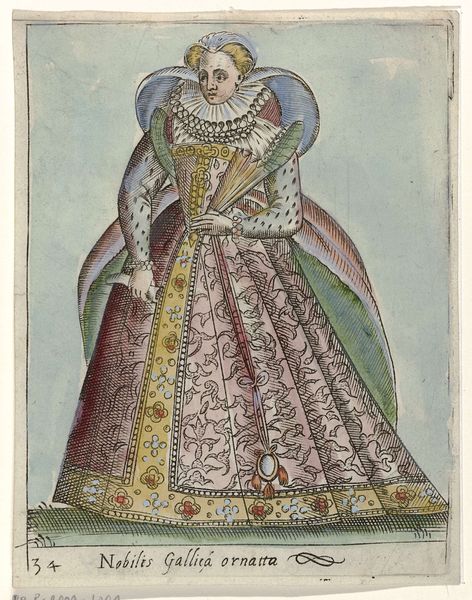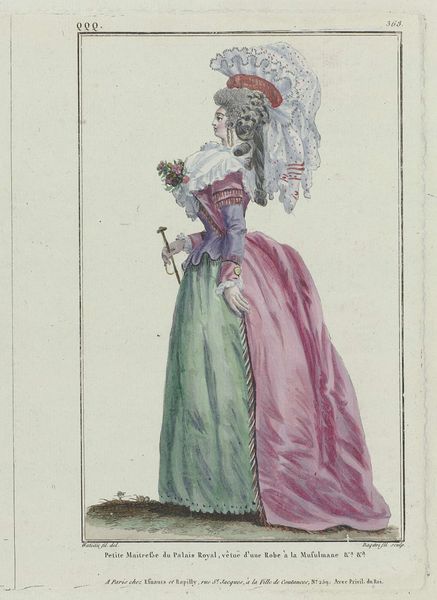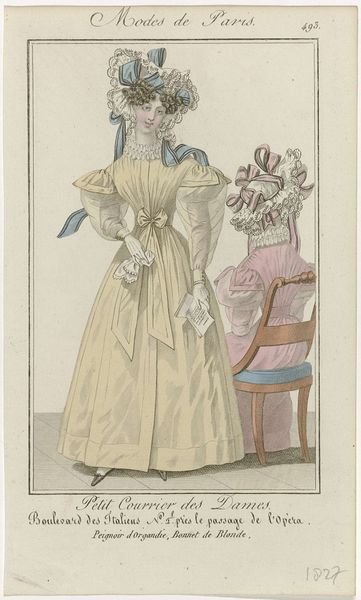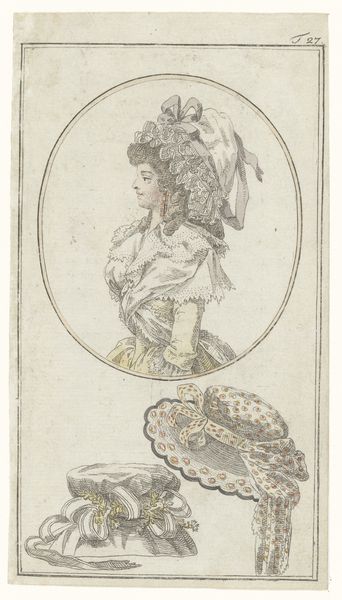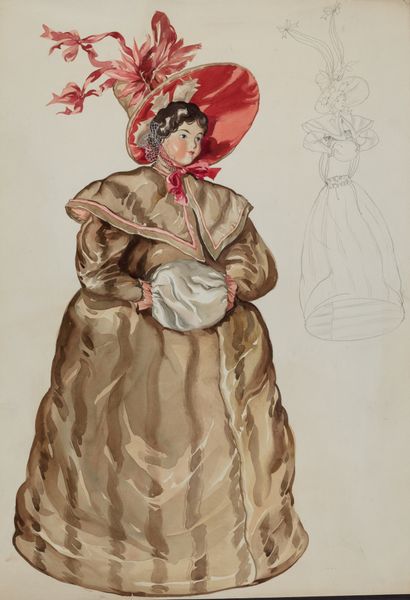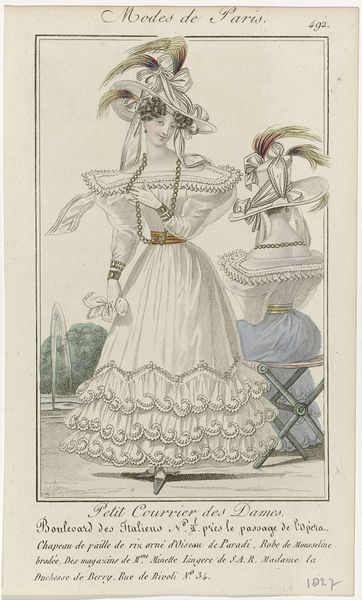
drawing, coloured-pencil, print
#
drawing
#
coloured-pencil
# print
#
caricature
#
caricature
#
figuration
#
coloured pencil
#
romanticism
#
genre-painting
#
academic-art
Dimensions: sheet: 14 1/8 x 9 5/8 in. (35.8 x 24.5 cm)
Copyright: Public Domain
Curator: Good morning! We are standing before a drawing titled "Much Ado About Nothing" by William Heath, also known as Paul Pry. This coloured pencil drawing dates back to 1828 and is currently held at the Metropolitan Museum of Art. Editor: What strikes me immediately is the…excess! The sheer volume of material used for the hat and dress, all those ribbons and the intense, almost frantic detailing. Curator: It's a caricature, meant to satirize the fashion excesses of the time, and class pretensions within the social context of early 19th-century England. The figure is overwhelmed, almost buried, by her finery. Editor: Exactly! It's also about the physical labor involved. Imagine the seamstresses, milliners, all the artisans required to create something so…frivolous. How does this object function as a social critique, made using the very methods it critiques? Curator: That is indeed a potent question. William Heath worked within a well-established tradition of satirical prints. These were hugely popular among the growing middle classes, shaping opinions on everything from politics to social mores. It served as a very public form of visual discourse. Editor: The print medium is crucial here. It's about dissemination, the means of distributing this commentary widely and relatively cheaply. Were these prints considered "low" art compared to, say, oil paintings at the time? Curator: Yes, definitely. Printmaking had a complicated status. It served the needs of mass culture and political messaging, unlike painting or sculpture which were regarded as unique artistic objects reserved for higher social classes. Heath definitely walked the line between art and political cartoon. Editor: And in that liminal space, it delivers a surprisingly effective commentary on the waste and labor involved in maintaining these superficial social performances. Looking at it now, I am wondering if "nothing" here refers to the perceived worth of women reduced to being these vessels. Curator: That’s a compelling point. Heath's work, viewed through a modern lens, highlights how the consumption of materials became intertwined with societal expectations, particularly for women of certain classes, during that period. Editor: This piece made me question the labor that produces this fashion; it provides, after all, "much ado" about making, showing and owning that kind of…material production! Curator: And it reminds us that the visual language of satire has long been a powerful tool for social and political critique, shaping public discourse and challenging established norms.
Comments
No comments
Be the first to comment and join the conversation on the ultimate creative platform.
